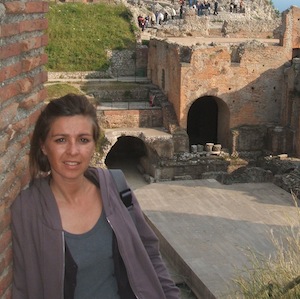Phantom limb pain (PLP) belongs to a group of neuropathic pain syndromes that is characterized by pain in the amputated limb that follows partial or complete deafferentation. It must be differentiated from non-painful phantom limb phenomena (namely, non-painful sensations related to the phenomenal persistence of the physically lost extremity) and stump pain occurring in the still-present body part adjacent to the amputation or deafferented nerve. PLP is considered as a challenging clinical condition since it is often refractory to classical pharmacological and surgical treatments, and it has detrimental effects on physical and psychological health and quality of life (e.g., Flor, 2002). Accordingly, there is a pressing need for the development of new therapeutic approaches for PLP.
The development of chronic PLP appears to be associated to maladaptive plastic changes occurring at several levels of the central nervous system, especially in the cerebral cortex (Flor et al., 2006; Ramachandran and Rogers-Ramachandran, 2000). If so, an ideal rehabilitative approach should try to reverse the maladaptive mechanisms sustaining PLP. In this perspective, we proposed to use the neuromodulatory technique of transcranial direct current stimulation (tDCS), a non-invasive technique of cortical stimulation that can affect brain plasticity.
tDCS is a feasible and painless tool for brain stimulation based on the application of a weak (typically 1-2 mA) direct current to the scalp that flows between two relatively large electrodes and penetrates the skull to enter the brain. This current, when delivered continuously for several minutes, modulates the level of excitability and the firing rate of individual neurons by changing neuronal resting membrane threshold, inducing long-lasting effects secondarily to synaptic modifications. There are two type of stimulation: anodal tDCS increases the neuronal excitability of the area being stimulated, whereas cathodal tDCS decreases it. (Nitsche et al., 2003)
Given that tDCS has the potential to modulate synaptic plasticity, we predicted that tDCS may be suitable to treat PLP, by modulating its maladaptive plastic components. A recent study from our laboratory has tested this prediction in a group of eight lower-limb or upper-limb amputees with chronic PLP (Bolognini et al., 2013a). We chose to stimulate two cortical areas: the motor cortex, since PLP is often associated with a functional reorganization of the sensorimotor cortex, and with increased excitability of the corticospinal neurons and a reduction of GABA activity in the primary motor cortex (Flor et al., 2006; Ridding and Rothwell, 1995). Moreover, some evidence is showing the usefulness of motor cortex stimulation by anodal tDCS for other chronic pain syndromes, known to be associated with maladaptive brain plasticity (e.g., fibromyalgia, central pain in traumatic spinal cord injury) (Fregni et al., 2007; O’Connell et al., 2010). Anodal tDCS of the motor cortex may reduce pain by the indirect modulation of the activity in brain areas involved in pain processing (i.e., the thalamus), and by facilitating descending pain inhibitory mechanisms (Fregni et al., 2007; Garcia-Larrea and Peyron, 2007). The second targeted area was the posterior parietal cortex, which also shows post-amputation plastic modifications, and it is involved in corporeal awareness and pain perception (Flor et al., 2000; Kew et al., 1994). Our findings show that increasing the excitability of the motor cortex with anodal tDCS (delivered for 15 minutes, at an intensity of 2 mA) can induce a short-lasting (<90 minutes) reduction of PLP, without affecting other amputation-related phenomena (i.e., stump pain and non-painful phantom limb sensation). Conversely, decreasing the excitability of the parietal cortex with cathodal tDCS can induce a short-lasting reduction of non-painful phantom sensation, without affecting PLP and stump pain. Hence, painful and non-painful phantom sensations are dissociable phenomena, mediated by cortical excitability shifts in motor and parietal areas, respectively, which can be regulated by tDCS. It is noteworthy the exploratory nature of the study. Indeed, a main limitation that needs to be entertained is the small sample size; studies including a larger number of amputees may further elucidate the present findings.
The next question is: can tDCS produce even a long-lasting, and maybe widespread, relief from PLP? Yes, it does, but in order to enhance the antalgic effect of motor cortex stimulation, multiple tDCS applications are necessary. In one lower-limb amputee with chronic pain a 5-day treatment with anodal tDCS of the motor cortex resulted in a long-lasting relief from PLP, stable up to 2 months (Bolognini et al., 2013b). Noteworthy, the 5-day treatment was also able to induce a parallel, complete relief from stump pain. Therefore, while a single application of tDCS of the motor cortex may induce a short-lived and selective relief from PLP, likely mediated by a local and transient modulation of motor cortex excitability, repetitive motor cortex stimulations may affect modulation of multiple components of the post-amputation pain, namely PLP and stump pain, with enduring benefits. These results have exciting theoretical and practical implications that will open new frontiers in the management of post-amputation pain.
About Nadia Bolognini
 Nadia Bolognini is Assistant Professor of Psychology (Psychobiology and Physiological Psychology) in the Department of Psychology of the University of Milano Bicocca (Italy). She obtained her PhD in Experimental and Clinical Psychology in 2005 in the University of Bologna, with a dissertation on multisensory processing in healthy and brain-damaged patients. She was vising researcher at the Wake Forest University (Winston-Salem, NC, USA), the University of Rome ‘Sapienza’ (Rome, Italy), and the Harvard Medical School (Boston, MA, USA). Nadia’s main research interests concern the neuropsychology of multisensory perception, the human tactile mirror system (on this, she awarded the “Editors Choice Award” for the best paper published in 2011 in the Journal Human Brain Mapping), and the use of non-invasive brain stimulation for the rehabilitation of sensory and motor disorders in patients with neurological diseases.
Nadia Bolognini is Assistant Professor of Psychology (Psychobiology and Physiological Psychology) in the Department of Psychology of the University of Milano Bicocca (Italy). She obtained her PhD in Experimental and Clinical Psychology in 2005 in the University of Bologna, with a dissertation on multisensory processing in healthy and brain-damaged patients. She was vising researcher at the Wake Forest University (Winston-Salem, NC, USA), the University of Rome ‘Sapienza’ (Rome, Italy), and the Harvard Medical School (Boston, MA, USA). Nadia’s main research interests concern the neuropsychology of multisensory perception, the human tactile mirror system (on this, she awarded the “Editors Choice Award” for the best paper published in 2011 in the Journal Human Brain Mapping), and the use of non-invasive brain stimulation for the rehabilitation of sensory and motor disorders in patients with neurological diseases.
References
Bolognini N, Olgiati E, Maravita A, Ferraro F, & Fregni F (2013). Motor and parietal cortex stimulation for phantom limb pain and sensations. Pain, 154 (8), 1274-80 PMID: 23707312
Bolognini N, Spandri V, Olgiati E, Fregni F, Ferraro F, & Maravita A (2013). Long-term analgesic effects of transcranial direct current stimulation of the motor cortex on phantom limb and stump pain: a case report. J Pain Symptom Manage 46 (4) PMID: 23932177
Flor H. Phantom-limb pain: characteristics, causes, and treatment. Lancet Neurol 2002; 1: 182-9.
Flor H, Mühlnickel W, Karl A, Denke C, Grüsser S, Kurth R, & Taub E (2000). A neural substrate for nonpainful phantom limb phenomena. Neuroreport, 11 (7), 1407-11 PMID: 10841347
Flor H, Nikolajsen L, & Staehelin Jensen T (2006). Phantom limb pain: a case of maladaptive CNS plasticity? Nat Rev Neurosci 7 (11), 873-81 PMID: 17053811
Fregni F, Freedman S, & Pascual-Leone A (2007). Recent advances in the treatment of chronic pain with non-invasive brain stimulation techniques. Lancet neurology, 6 (2), 188-91 PMID: 17239806
Garcia-Larrea L, & Peyron R (2007). Motor cortex stimulation for neuropathic pain: From phenomenology to mechanisms. NeuroImage, 37 Suppl 1 PMID: 17644413
Kew JJ, Ridding MC, Rothwell JC, Passingham RE, Leigh PN, Sooriakumaran S, Frackowiak RS, & Brooks DJ (1994). Reorganization of cortical blood flow and transcranial magnetic stimulation maps in human subjects after upper limb amputation. J Neurophysiol 72 (5), 2517-24 PMID: 7884476
Nitsche MA, Liebetanz D, Antal A, Lang N, Tergau F, Paulus W. Modulation of cortical excitability by weak direct current stimulation–technical, safety and functional aspects. Suppl Clin Neurophysiol 2003; 56: 255-76.
O’Connell NE, Wand BM, Marston L, Spencer S, Desouza LH. Non-invasive brain stimulation techniques for chronic pain. Cochrane Database Syst Rev 2010: CD008208.
Ramachandran VS, Rogers-Ramachandran D. Phantom limbs and neural plasticity. Arch Neurol 2000; 57: 317-20.
Ridding MC, Rothwell JC. Reorganisation in human motor cortex. Can J Physiol Pharmacol 1995; 73: 218-22.



